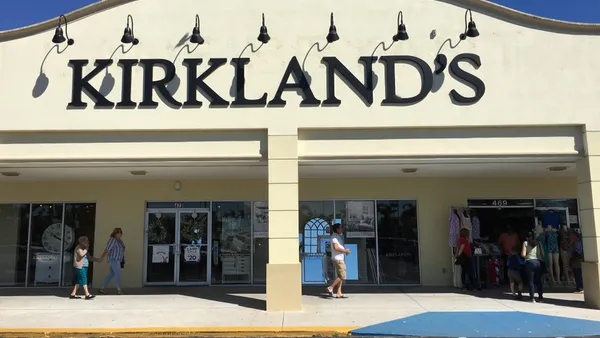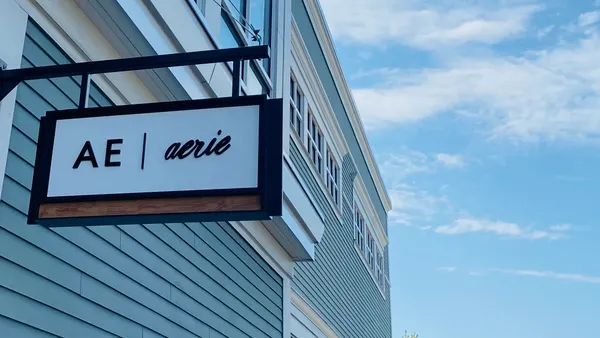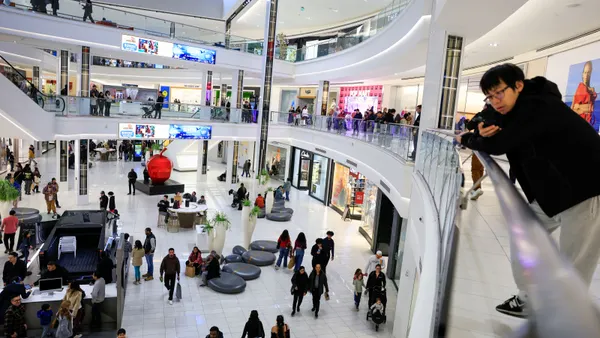Dive Brief:
-
The rising cost of Sears Holding Corp.'s debt load is imperiling funds the embattled retailer needs to finance its years-long turnaround effort, according to data from financial research firm IHS Markit cited by The Wall Street Journal.
-
Insuring $10 million of Sears bonds against default for five years has now ballooned to a record cost of $4.6 million annually, up from $3.3 million in September, according to IHS Markit. International ratings agency Fitch last month also listed Sears as a retailer in danger of default.
-
Sears' share price fell hard last month as Fitch downgraded its senior unsecured notes, saying that interest expenses, capital expenditures and pension plan contributions could reach $1 billion this year.
Dive Insight:
Sears Holdings on Dec. 29 announced that it had obtained a $200 million secured standby letter of credit facility provided by CEO Edward Lampert’s ESL Investments hedge fund to fund its operations, but that’s beginning to sound like chump change in relation to its financial needs.
Sears is shuttering an additional 150 unprofitable stores, including 108 Kmart and 42 Sears stores, in an effort to curtail losses. The closures would leave Sears with fewer than 1,500 stores, down about 60% from 2011 totals. In a report mailed to Retail Dive that month, Debtwire analysts noted a potential change in tone from Sears executives that could suggest the once-iconic retailer is beyond the brink: That report highlighted Sears earnings reports in which the company underscores its intent not to borrow money to fund continued operating losses, but rather to “provide flexibility.”
“In reading the tea leaves, we compare this comment made in 2Q: ‘...as it relates to funding our transformation, we continue to focus on the funding of our transformation while meeting all of our financial obligations,’ to this one in 3Q: ‘We believe that we have the resources to fund our transformation and meet all of our financial obligations,’” the Debtwire report reads. “The intent behind the two statements may be the same, but we wonder if there is a subtle shift in tone when considered with the new language of not funding losses.”
Sears has touted its ambitions to become an “asset-light” company and to focus on becoming a “member-focused” one, and — in a December statement on the $200 million credit line — CFO Jason M. Hollar reiterated that stance.
"As Sears Holdings has consistently shown, we will take actions to adjust our capital structure, generate liquidity and manage our business to enable us to execute on our transformation while meeting all of our financial obligations,” Hollar said. “This new standby letter of credit facility further demonstrates that Sears Holdings has numerous options to finance our business strategy.”
But as Debtwire analysts noted, it’s not clear what that really means. In practice, it has meant a dominoes-like falling of Sears stores, which for years have been neglected and unappealing, as well as the spinoff of its still-strong Craftsman, Kenmore and DieHard brands.
The Craftsman sale for $900 million to tools and hardware maker Stanley Black & Decker in particular resonates deeply. Not only is Craftsman one of the best known American brands ever — Sears first registered the trademark in 1927 — but it has stood the test of time, remaining a fixture of Sears stores and a staple of American workshops and garages into the 21st century. While sales have slipped of late, Craftsman still ranks among Sears’ best-selling categories.
Though it seems likely that Crafstman will continue to thrive under the Stanley Black & Decker aegis, Sears’ own chances for survival seem increasingly remote. “The proud tradition that was Sears, Roebuck & Co. is now officially over,” Cathy Hotka, Principal, Cathy Hotka & Associates said last month. “The one compelling reason to go to a Sears store was the Craftsman promise. Mr. Lampert’s mission is now accomplished.”
The mission in question: Lampert’s systematic investments in Sears, which have done little to lift the company but will likely result in a financial windfall for his hedge fund.














